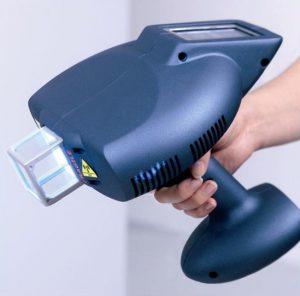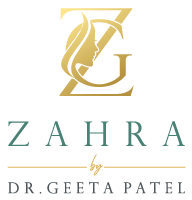Excimer 308-nm light is a form of targeted phototherapy that delivers a specific wavelength (308 nm) of ultraviolet B (UVB) radiation using an excimer laser or an excimer lamp. Excimer light treatment is a development of whole body narrowband UVB.
The UV ray generated by the excimer light is delivered via a hand-held wand that focuses on the lesion. Compared with narrowband UVB, its advantages are:
- Healthy skin surrounding the affected areas is not exposed to radiation
- Different templates are used according to the area to be treated
- A higher dose of radiation can be delivered, with a reduced cumulative dose of irradiation
- In some cases, a shorter course of treatment is effective
- It can be used in areas difficult to reach with conventional phototherapy, such as ears and genitals
- It can be used in children, as it is a relatively friendly–looking piece of equipment.

What are the indications for excimer 308-nm light treatment?
Excimer laser therapy is an option for the treatment of
- Localised Vitiligo
- Moderately severe localised Psoriasis, unresponsive to topical treatments
- Atopic dermatitis
- Alopecia aereata
- Common lichen
It is often combined with topical therapies to enhance response, for instance, topical calcineurin inhibitors and topical steroids.
Some case reports document its use for localised severe cutaneous T-cell lymphoma, localised scleroderma, and granuloma annulare.
What are the side effects of excimer light treatment?
In most cases, excimer light is tolerated well. The aim of treatment is to deliver a dose that induces visible redness in the psoriatic lesion (supra-erythematous dose).
Sometimes side effects include:
- Painful erythema
- Hyperpigmentation
- Erosions
- Koebnerisation (development of skin lesions due to trauma in case of a burn)
- Reactivation of herpes virus infection.
What does the treatment involve?
Patients attend 1–3 times weekly. The amount of UV delivered is carefully calculated and monitored taking into account the skin type, age, skin condition, site and response to treatment.
The duration of treatment is shorter than for whole body phototherapy. Some response may be noted as early as 6–8 treatments and complete response may take 20–30 sessions.
Patients begin to see results after only a few sessions and enjoy much greater self-esteem and a higher quality of life. Patients usually enjoy several months of treatment-free remission and appreciate being freed from the burden of applying steroids several times every day.


